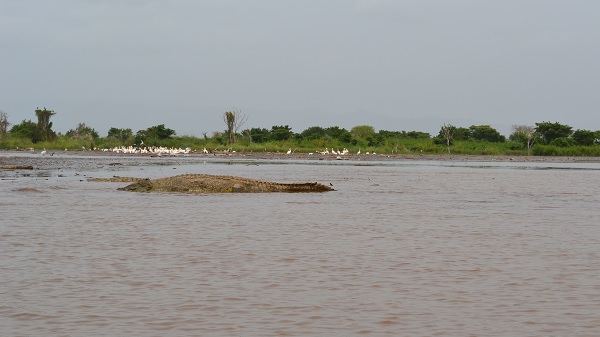
ARBA MINCH (AMU)–The startling array of research findings emanating from key limnological variables, historical data and field measurements indicate that indiscriminate ecological changes are pushing both lakes, Lake Abaya and Lake Chamo, on the brink of total jeopardy, if intervention at policy level isn’t taken (Click here to see the pictures).
Dr Fassil Eshetu with co-authors in his two scientific papers published on Inland Water Journal further revealed that 55 years’ data showed that total phosphorus and total nitrogen concentrations in both lakes have increased five-to-seven-fold over the study period.
It states that water transparency declined, especially in Lake Chamo that used to be clear, is now sediment-loaded. The catchment areas of Abaya and Chamo have experienced profound land-use changes; wherein during 1973-2006 cultivated land increased by 39% and 37% of the natural grasslands in the highlands have currently been converted to farmland.
It was found that land degradation due to water erosion and poor land use caused nutrient level to plummet sharply in both lakes. The catchment of both lakes is characterized by a humid and hot semiarid tropical climate with bimodal rainfall pattern including two wet seasons.
It adds that most of the alluvial soils around two lakes were formed from materials recently deposited by rivers. The deltas and flood plains are deep, fertile and suited for cultivation. Hence, it has extensively been cultivated since 1980s, resulting in loads of sediment and nutrients entering from the inflows of the lakes.
It also unraveled that in 1980, the transparency level at Chamo was 115 cm, which has now been reduced to 36 cm; for Abaya it’s varied from 19 to 9 cm for more wind-induced sediment re-suspension made it more turbid in last 40 years. Unfortunately, with drastic land degradation in catchment, Lake Chamo is also heading towards Abaya-like fate.
The reconnection and disconnection between two lakes in 1980 and 2013 reflect changes in water levels that probably brought about by tectonic activity in the region, Dr Fassil argues. Further, indiscriminate agricultural activities and deforestation reduced land’s ability to absorb the runoff, triggering erosion and washing out of soil and nutrients into rivers and lakes.
The study puts nutrient level (total nitrogen and phosphorus) in Abaya and Chamo over 1.7 and 2.6 mg/liter respectively. Unlike most hyper-tropic lakes, algal blooms and chlorophyll level at Abaya in last four decades has been poor; while Chamo showed sharp decline since 1990s. Consequently, it has badly impacted zooplankton densities and fish production and salinity has also been cause of concern for both lakes.
Dr Fassil said that despite being prominent in maintaining biological diversity and economic sustainability little or nothing has been done to protect these lakes. If corrective measures are not taken to prevent further ecological degradation in these lakes, it will be too late.
The second study analyzing the food-web structure of both lakes exploiting stable isotopes has identified that isotopic niche of the fish community in Abaya is larger and more diversified compared to Chamo. For fish, sediment organic material seems to be a major energy source in Abaya, while zooplankton is a dominant source in Chamo. And it found to be consistent with the different ecology of both lakes, where high turbidity torpedoes primary and secondary production in Abaya.
The study has used data from national and international scientific literature from 1961 to 2015 on limnological variables, survey, nitrogen and phosphorus level, salinity, transparency, phytoplankton and chlorophyll. It also took recourse to data from Central Statistical Agency, Food and Agriculture Organization and International Fertilizer Development Centre and Winrock International Institute for Agricultural Development.
Source: Arba Minch University
——
Other stories:
- AAU Organizes National Conference on Threats to Lake Ziway
- New York University Students Partnered with Hawassa City Administration to Support Rapid Urbanization and Ecotourism
